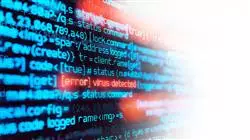University certificate
The world's largest faculty of information technology”
Why study at TECH?
This program will prepare you intensively to specialize in cybersecurity management, the most demanded professional profile in the IT field today"

Today's world is moving towards complete digitalization. More and more processes, operations and basic tasks of all kinds are being performed through an electronic device. But this progress also has certain risks, as computers, smartphones, tablets and all kinds of digital applications can be susceptible to cyber attacks. For that reason, many companies are looking for experts who can effectively lead and manage the cybersecurity of their services. Therefore, this new professional profile is in great demand, so this program has been designed to provide the latest knowledge and techniques to the computer scientist, who will be prepared to be the director of cybersecurity in any company that
requires it.
In recent years, the digitization process has accelerated, driven by the continuous advances in information technology. Thus, not only technology has enjoyed great improvements, but also the digital tools themselves with which many tasks are performed today. For example, these advances have made it possible for many banking operations to be carried out from a mobile application. There have also been new developments in the healthcare field, in appointment systems or in access to medical records. In addition, thanks to these technologies, it is possible to consult invoices or request services from companies in areas such as telephony.
But these advances have also led to an increase in computer vulnerabilities. Thus, while the options for performing various activities and tasks have expanded, attacks on the security of devices, applications and websites have increased proportionally. As a result, more and more companies are looking for cybersecurity professionals who are able to provide them with adequate protection against all types of cyber attacks.
Thus, the profile of Cybersecurity Manager is one of the most sought after by companies that operate on the Internet or have services in the digital environment. And to respond to this demand, TECH has designed this Professional MBA in Advanced Cybersecurity Management (CISO), which will provide the computer scientist with all the necessary tools to exercise this position effectively and taking into account the latest developments in protection and vulnerabilities in this technological field.
In this program you will be able to delve into aspects such as security in the development and design of systems, techniques or security in Cloud Computing environments. And you will do so through a 100% online methodology with which you will be able to combine your professional work with your studies, without rigid schedules or uncomfortable trips to an academic center. In addition, you will enjoy numerous multimedia teaching resources, taught by the most prestigious and specialized faculty in the filed of cybersecurity.
Learn, first hand, the best security techniques applied to Cloud Computing environments or Blockchain technology”
This MBA in Advanced Cybersecurity Management (CISO) contains the most complete and up-to-date program on the market. The most important features include:
- Case studies presented by IT and cybersecurity experts
- The graphic, schematic, and practical contents with which they are created, provide scientific and practical information on the disciplines that are essential for professional practice
- Practical exercises where the self-assessment process can be carried out to improve learning
- Its special emphasis on innovative methodologies
- Theoretical lessons, questions to the expert, debate forums on controversial topics, and individual reflection work
- Content that is accessible from any fixed or portable device with an Internet connection
You will enjoy numerous multimedia contents to speed up your learning process, while receiving the support of a faculty of great prestige in the field of cybersecurity”
The program includes, in its teaching staff, professionals of the sector who pour in this training the experience of their work, in addition to recognized specialists of reference societies and prestigious universities.
The multimedia content, developed with the latest educational technology, will provide the professional with situated and contextual learning, i.e., a simulated environment that will provide immersive education programmed to prepare for real situations.
This program is designed around Problem-Based Learning, whereby the professional must try to solve the different professional practice situations that arise during the course. For this purpose, the students will be assisted by an innovative interactive video system created by renowned and experienced experts.
TECH's online methodology will allow you to choose the time and place to study, without hindering your professional work"

You will be able to become the Cybersecurity Manager of the best companies in your field"
Why study at TECH?
TECH is the world’s largest online university. With an impressive catalog of more than 14,000 university programs available in 11 languages, it is positioned as a leader in employability, with a 99% job placement rate. In addition, it relies on an enormous faculty of more than 6,000 professors of the highest international renown.

Study at the world's largest online university and guarantee your professional success. The future starts at TECH”
The world’s best online university according to FORBES
The prestigious Forbes magazine, specialized in business and finance, has highlighted TECH as “the world's best online university” This is what they have recently stated in an article in their digital edition in which they echo the success story of this institution, “thanks to the academic offer it provides, the selection of its teaching staff, and an innovative learning method aimed at educating the professionals of the future”
A revolutionary study method, a cutting-edge faculty and a practical focus: the key to TECH's success.
The most complete study plans on the university scene
TECH offers the most complete study plans on the university scene, with syllabuses that cover fundamental concepts and, at the same time, the main scientific advances in their specific scientific areas. In addition, these programs are continuously being updated to guarantee students the academic vanguard and the most in-demand professional skills. In this way, the university's qualifications provide its graduates with a significant advantage to propel their careers to success.
TECH offers the most comprehensive and intensive study plans on the current university scene.
A world-class teaching staff
TECH's teaching staff is made up of more than 6,000 professors with the highest international recognition. Professors, researchers and top executives of multinational companies, including Isaiah Covington, performance coach of the Boston Celtics; Magda Romanska, principal investigator at Harvard MetaLAB; Ignacio Wistumba, chairman of the department of translational molecular pathology at MD Anderson Cancer Center; and D.W. Pine, creative director of TIME magazine, among others.
Internationally renowned experts, specialized in different branches of Health, Technology, Communication and Business, form part of the TECH faculty.
A unique learning method
TECH is the first university to use Relearning in all its programs. It is the best online learning methodology, accredited with international teaching quality certifications, provided by prestigious educational agencies. In addition, this disruptive educational model is complemented with the “Case Method”, thereby setting up a unique online teaching strategy. Innovative teaching resources are also implemented, including detailed videos, infographics and interactive summaries.
TECH combines Relearning and the Case Method in all its university programs to guarantee excellent theoretical and practical learning, studying whenever and wherever you want.
The world's largest online university
TECH is the world’s largest online university. We are the largest educational institution, with the best and widest online educational catalog, one hundred percent online and covering the vast majority of areas of knowledge. We offer a large selection of our own degrees and accredited online undergraduate and postgraduate degrees. In total, more than 14,000 university degrees, in eleven different languages, make us the largest educational largest in the world.
TECH has the world's most extensive catalog of academic and official programs, available in more than 11 languages.
Google Premier Partner
The American technology giant has awarded TECH the Google Google Premier Partner badge. This award, which is only available to 3% of the world's companies, highlights the efficient, flexible and tailored experience that this university provides to students. The recognition as a Google Premier Partner not only accredits the maximum rigor, performance and investment in TECH's digital infrastructures, but also places this university as one of the world's leading technology companies.
Google has positioned TECH in the top 3% of the world's most important technology companies by awarding it its Google Premier Partner badge.
The official online university of the NBA
TECH is the official online university of the NBA. Thanks to our agreement with the biggest league in basketball, we offer our students exclusive university programs, as well as a wide variety of educational resources focused on the business of the league and other areas of the sports industry. Each program is made up of a uniquely designed syllabus and features exceptional guest hosts: professionals with a distinguished sports background who will offer their expertise on the most relevant topics.
TECH has been selected by the NBA, the world's top basketball league, as its official online university.
The top-rated university by its students
Students have positioned TECH as the world's top-rated university on the main review websites, with a highest rating of 4.9 out of 5, obtained from more than 1,000 reviews. These results consolidate TECH as the benchmark university institution at an international level, reflecting the excellence and positive impact of its educational model.” reflecting the excellence and positive impact of its educational model.”
TECH is the world’s top-rated university by its students.
Leaders in employability
TECH has managed to become the leading university in employability. 99% of its students obtain jobs in the academic field they have studied, within one year of completing any of the university's programs. A similar number achieve immediate career enhancement. All this thanks to a study methodology that bases its effectiveness on the acquisition of practical skills, which are absolutely necessary for professional development.
99% of TECH graduates find a job within a year of completing their studies.
Professional Master's Degree in Advanced Cybersecurity Management
In recent years, technological development has enabled the creation of digital tools to perform a variety of tasks. For example, banking transactions and invoice consultation can be elaborated through mobile applications. However, these advances have also created computer vulnerabilities that have led to an increase in attacks on the security of devices, applications and websites. To combat this threat, companies require security managers who are highly skilled in the field. To meet this demand, TECH has created the Professional Master’s Degree MBA in Advanced Cybersecurity Management (CISO), which provides students with the necessary knowledge to perform this job effectively.
Boost your professional career in the area of Cybersecurity
The Professional Master’s Degree MBA in Advanced Cybersecurity Management (CISO) has positioned itself as an excellent tool to help you learn about risk analysis techniques in the digital environment, identity and access management protocols in IT security or strategies to ensure data protection in the cloud. In this way, it will contribute directly to your professional development. Moreover, it will do so following a 100% online methodology that will allow you to study without depending on uncomfortable closed schedules.







